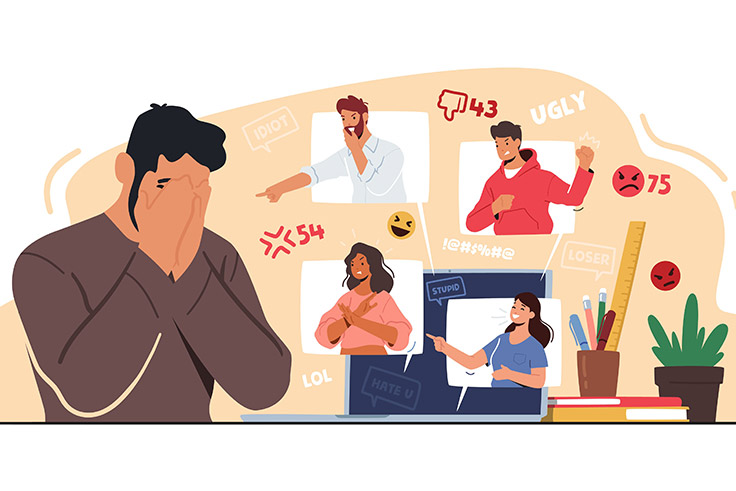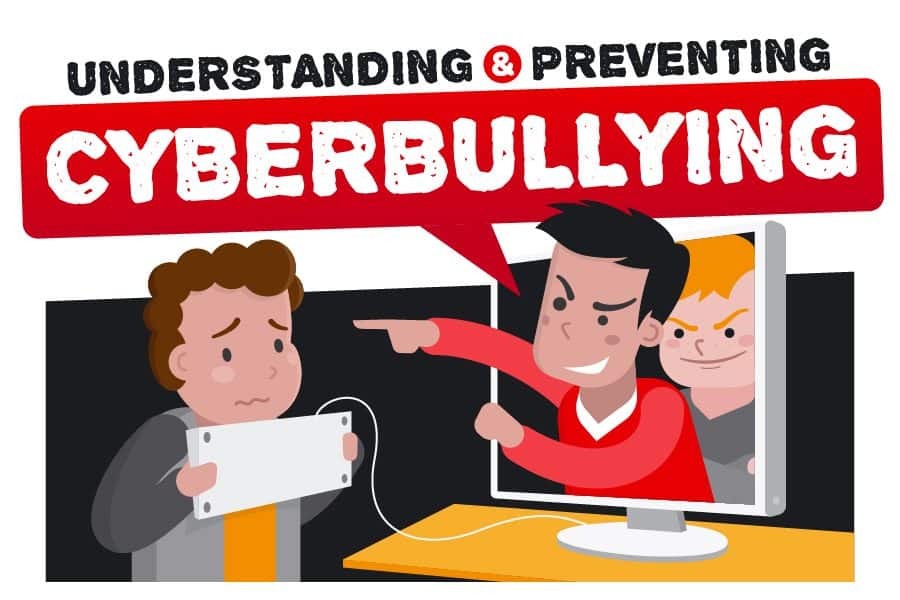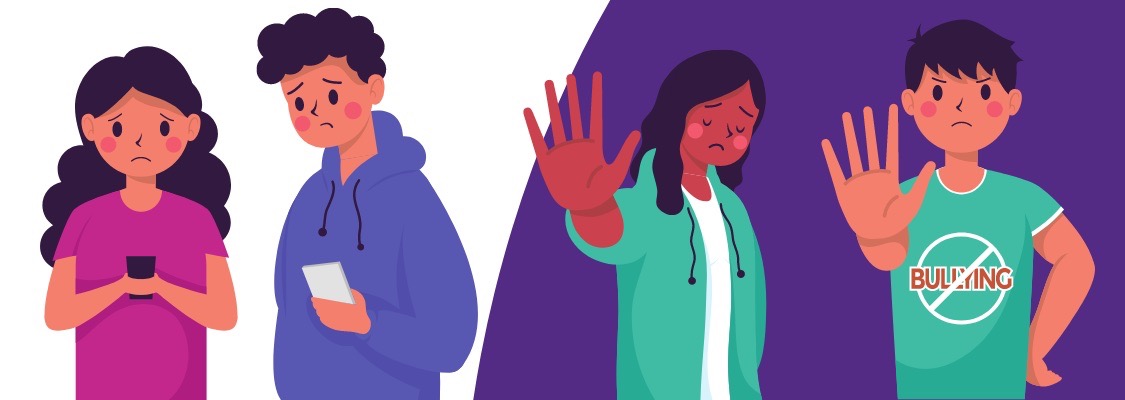It is no longer a strange sight to see teenagers with a phone in their hands. They use their smartphones and other electronic devices to stay connected with friends and access information more easily than previous generations of students. In the midst of these numerous messages, tweet feeds, and posts, teenagers are given unrestricted access to a vast pool of information located just at the tip of their fingers.
But as social media platforms, websites, apps, and chats provide more opportunities and unique ways for teens to learn and communicate, they also come with their concerns, such as cyberbullying.
What is Cyberbullying?

Cyberbullying is a form of bullying that occurs online when one or more people tease, threaten, embarrass, or otherwise target someone. Playful teasing is normal and even expected among young ones, however, cyberbullying is targeted and comes in form of continuous harassment that can severely and negatively impact the mental and emotional state of students.
How to Recognize Cyberbullying
Most of these teenagers spend time with their mobile devices and on the internet. They now live in a world where they seek validation from their friends and followers online. Staying caught up on digital trends is a challenging but incredibly beneficial tool in assessing ways to prevent cyberbullying and recognize when cyberbullying may be occurring. Learning the platforms, they use (Snapchat, Twitter, Instagram, etc.) and the terms they use to reference their interactions will give you a point of reference for things you may overhear in passing or things that may be directly brought to your attention.
Stay on the lookout for warning signs that a student is engaging in cyberbullying or being cyberbullied, including:
- Increased/decreased usage of their phone or other devices
- Loss of interest in activities they previously enjoyed
- Social withdrawal
- Trouble focusing
- Irritability
- Emotional reactions to texts/IMs/emails
- Hiding screens or deleting messages, apps, or social media accounts
If you notice a student’s change in mood or behavior that seems to coincide with time spent on their phone or online, ask questions and remember to document everything.
READ MORE: Signs Your Child Is Being Bullied
Where Cyberbullying Often Occurs

Prevention of cyberbullying and solutions to cyberbullying requires knowing where it’s happening or likely to happen. Below is a list of common apps/sites that students use for socializing and through which cyberbullying often occurs:
- Snapchat
- YouTube
- TikTok
Preventing & Addressing Cyberbullying as a Teacher
In looking at how to prevent cyberbullying, establishing early boundaries and expectations of how students should interact has been shown to be among the most necessary and effective practices. With clear expectations of acceptable online and offline behavior, students have a guideline for navigating digital and classroom spaces…and this guideline can be essential for the prevention of cyberbullying.
Rules should be explicit and directly communicated, along with consequences to expect as a result of violating them. This way, if misconduct occurs, teachers are able to point to exactly what that violation was, and students are aware of the expected consequences.
Establishing Rules for Cyberbullying

Teaching students about cyberbullying prior to an instance is a necessary but not fail-proof method of prevention. Should these rules and boundaries be violated and you observe cyberbullying occur, it’s important to have a strategy for handling it that includes:
1. Observation and intervention
Pay attention to the behavior of students and budding conflicts, and intervene as necessary. Always ask questions and listen to what is said and what isn’t.
2. Documentation
Take notes when incidents occur, no matter how minor they seem. Seemingly small things can quickly explode into major conflicts. Also, if a student directly reports cyberbullying to you or you witness an occurrence, encourage them to save any evidence.
3. Communication
Verbal and/or written communication with the administration about the incident(s) should happen as soon as possible. Be sure to provide any documentation of any previous incidents, conversations, or observations.
4. Solutions
Solutions to cyberbullying should always be in the interest of protecting students and should center around the targeted student. Inquire about their desired outcomes, and maneuver with them in mind. The focus should not be on punishing anyone, but rather on resolving conflict and creating an environment that keeps students safe and fosters a healthy learning environment for all.
Students don’t have to suffer silently. When teachers know what cyberbullying looks like, they can implement proactive policies and strategies to prevent, recognize, and stop cyberbullying. Teacher intervention can be essential to maintaining the safety of students who are learning to navigate an increasingly technology-based world.
